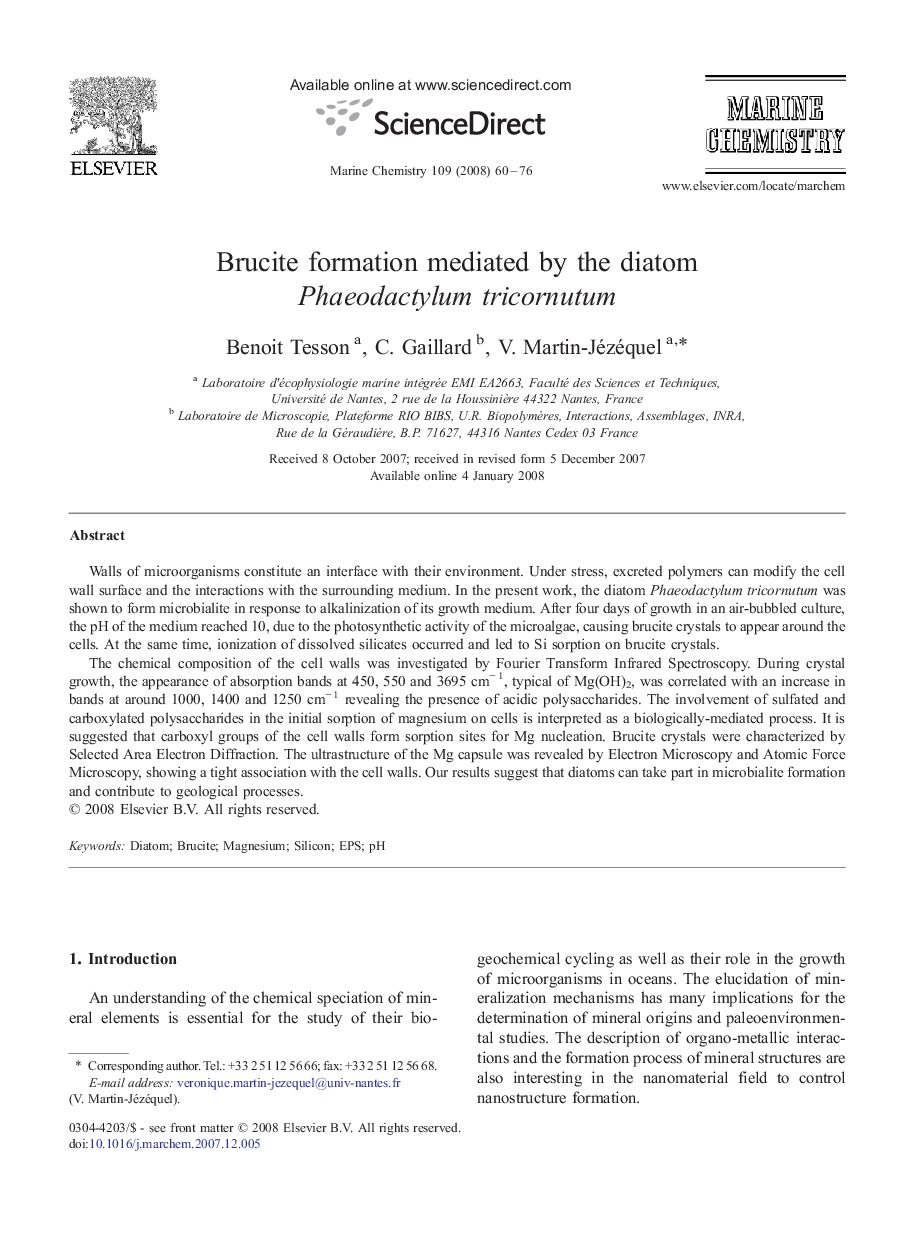| Article ID | Journal | Published Year | Pages | File Type |
|---|---|---|---|---|
| 1262387 | Marine Chemistry | 2008 | 17 Pages |
Walls of microorganisms constitute an interface with their environment. Under stress, excreted polymers can modify the cell wall surface and the interactions with the surrounding medium. In the present work, the diatom Phaeodactylum tricornutum was shown to form microbialite in response to alkalinization of its growth medium. After four days of growth in an air-bubbled culture, the pH of the medium reached 10, due to the photosynthetic activity of the microalgae, causing brucite crystals to appear around the cells. At the same time, ionization of dissolved silicates occurred and led to Si sorption on brucite crystals.The chemical composition of the cell walls was investigated by Fourier Transform Infrared Spectroscopy. During crystal growth, the appearance of absorption bands at 450, 550 and 3695 cm− 1, typical of Mg(OH)2, was correlated with an increase in bands at around 1000, 1400 and 1250 cm− 1 revealing the presence of acidic polysaccharides. The involvement of sulfated and carboxylated polysaccharides in the initial sorption of magnesium on cells is interpreted as a biologically-mediated process. It is suggested that carboxyl groups of the cell walls form sorption sites for Mg nucleation. Brucite crystals were characterized by Selected Area Electron Diffraction. The ultrastructure of the Mg capsule was revealed by Electron Microscopy and Atomic Force Microscopy, showing a tight association with the cell walls. Our results suggest that diatoms can take part in microbialite formation and contribute to geological processes.
